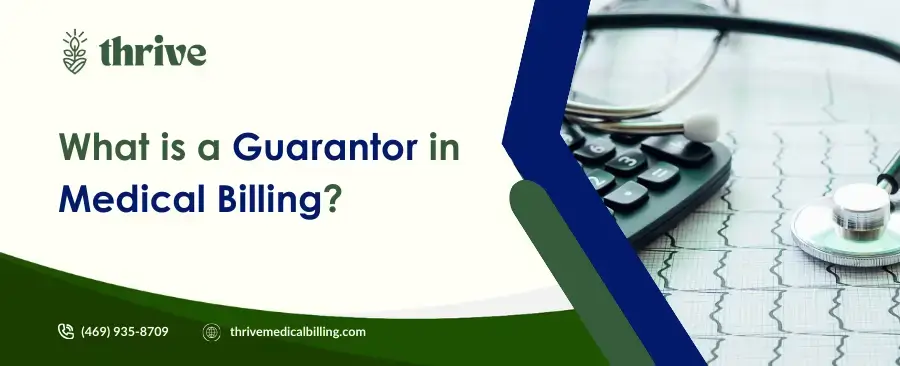In 2025, the landscape of healthcare billing is evolving rapidly. New regulations, technological advancements, and an emphasis on patient care drive this transformation. Understanding key billing terminology is crucial for healthcare providers.
This helps them follow rules, improve payments, and keep financial stability. This guide explains important terms that every healthcare provider should know for billing in 2025. It offers helpful tips to understand the complexities of medical billing.
Why Understanding 2025 Billing Terms Matters
Medical billing is the backbone of a healthcare practice’s financial health. With the updates to the 2025 Medicare Physician Fee Schedule, there are new billing codes. Changes in telehealth services also exist. Providers need to understand these terms.
This will help them avoid claim denials, reduce errors, and improve revenue cycle management (RCM). Terms like HCPCS codes, diagnosis codes, and explanation of benefits (EOB) are important for correct billing. They help ensure compliance with Centers for Medicare & Medicaid Services (CMS) rules.
By understanding these terms, providers can:
- Streamline billing systems for faster reimbursements.
- Ensure compliance with Medicare and Medicaid services requirements.
- Improve patient satisfaction by clarifying cost sharing and insurance coverage.
Let’s dive into the key terms every healthcare provider should know in 2025.
Essential Billing Terms for 2025
1. HCPCS Code
The Healthcare Common Procedure Coding System (HCPCS) is a coding system. Providers use it to bill Medicare and Medicaid. This system covers services, procedures, and equipment not included in Current Procedural Terminology (CPT) codes.
In 2025, new HCPCS codes, such as those for Advanced Primary Care Management Services (APCM), will support value-based care models. Accurate use of HCPCS codes ensures proper reimbursement and compliance.
2. Diagnosis Codes (ICD-10)
Diagnosis codes under the International Classification of Diseases (ICD-10) describe a patient’s condition and justify the medical necessity of services. The 2025 ICD-10-CM update includes 252 new codes effective October 1, 2024. Providers must use specific codes, such as E66.01 for morbid obesity. This helps avoid claim rejections and ensures accurate billing.
3. Explanation of Benefits (EOB)
An EOB is a statement from insurance companies. It shows the services covered, amounts paid, and what the patient must pay, like co-pays or deductibles. Reviewing EOBs helps providers identify billing errors and appeal denied claims, ensuring maximum reimbursement.
4. Medicare Beneficiary
A Medicare beneficiary is an individual enrolled in Medicare Part A, Part B, or Part C. In 2025, providers must verify beneficiary eligibility to confirm covered services and avoid non-reimbursable claims. The system uses the Medicare Beneficiary Identifier (MBI) to track claims securely.
5. Time of Service
Time of service refers to the date a healthcare service is provided, critical for billing accuracy. For telehealth or preventive services, noting the correct time of service is important. This helps follow CMS guidelines and submit claims on time.
6. Medicare Physician Fee Schedule (2025)
The 2025 Medicare Physician Fee Schedule (PFS) outlines reimbursement rates for physician services. With a 2.93% reduction in the conversion factor to $32.35, providers must optimize coding to mitigate financial impacts. New codes for APCM and caregiver training services reflect CMS’s focus on value-based care.
7. Advanced Primary Care Management Services (APCM)
APCM codes (G0556, G0557, G0558) introduced in 2025 bundle care management services for patients with chronic conditions. These codes simplify billing by removing time-based thresholds, supporting healthcare services like care coordination and 24/7 access.
8. Covered Services
Covered services are procedures or treatments reimbursed by insurance coverage plans, such as Medicare Part B or private insurers. Providers must verify coverage for services like telehealth or preventive services to avoid patient out-of-pocket costs.
9. Cost Sharing
Cost sharing includes patient responsibilities like co-pays, co-insurance, and deductibles. Clear communication about cost sharing enhances patient trust and reduces billing disputes, especially for Medicare beneficiaries.
10. Telehealth Services
Telehealth services allow remote delivery of healthcare services. In 2025, CMS will reinstate pre-COVID restrictions for most telehealth services unless Congress extends flexibilities. Providers must use updated billing codes and verify patient locations for reimbursement.
11. Billing Systems
Robust billing systems automate claim submissions, track accounts receivable, and ensure compliance with CMS regulations. Investing in AI-powered medical billing software reduces errors and accelerates revenue cycles.
12. Preventive Services
Preventive services, such as vaccinations and screenings, are often fully covered by Medicare and private insurers. In 2025, expanded coverage for colorectal cancer screening includes blood-based biomarker tests, requiring updated billing codes.
13. Centers for Medicare & Medicaid Services (CMS)
CMS oversees Medicare and Medicaid, setting policies for billing codes, reimbursement rates, and compliance. You must stay updated on CMS guidelines to navigate 2025 medical billing regulations effectively.
Best Practices for 2025 Billing Success
To leverage these terms effectively, healthcare providers should adopt the following strategies:
- Stay Educated: Regularly train staff on 2025 Medicare Physician Fee Schedule updates, HCPCS codes, and diagnosis codes. Continuous education reduces errors and ensures compliance.
- Leverage Technology: Use advanced billing systems with AI-driven coding tools to streamline claim scrubbing and reduce denials. Blockchain-based payment systems can enhance security and transparency.
- Verify Eligibility: Confirm Medicare beneficiary status and insurance coverage before providing services to avoid non-reimbursable claims.
- Review EOBs: Analyze explanation of benefits statements to identify discrepancies and appeal denied claims promptly.
- Optimize Telehealth Billing: Stay informed about telehealth services restrictions and use correct billing codes to maximize reimbursements.
- Work with Experts: Team up with medical billing services like Thrive Medical Billing. They can help you understand CMS rules, improve revenue cycle management, and boost financial results.
The Role of Medical Billing Services in 2025
Navigating the complexities of 2025 medical billing requires expertise and efficiency. Professional medical billing services, like those offered by Thrive Medical Billing, provide:
- Certified Coders: Experts in HCPCS codes, CPT codes, and ICD-10 ensure accurate claim submissions.
- Compliance Support: Stay ahead of CMS regulations to avoid penalties and audits.
- Revenue Optimization: Maximize reimbursements by minimizing denials and improving RCM.
- Technology Integration: Leverage advanced billing systems for faster, error-free processing.
By outsourcing to Thrive Medical Billing, providers can focus on delivering exceptional healthcare services while ensuring financial stability.
Conclusion
Knowing key terms for healthcare billing in 2025 is important for success in the changing healthcare world. Understanding terms like HCPCS codes and telehealth services helps providers improve billing, follow rules, and better patient care. By staying informed, leveraging technology, and partnering with experts like Thrive Medical Billing, healthcare practices can navigate 2025 with confidence.








